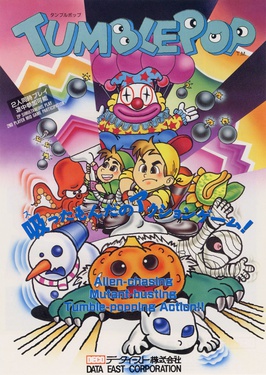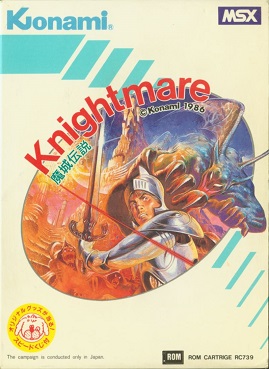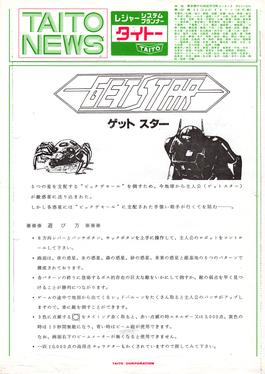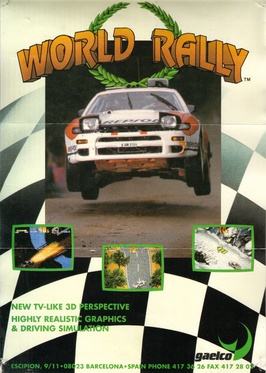
Atari Games Corporation, known as Midway Games West Inc. after 1999, was an American producer of arcade games. It was formed in 1985 when the coin-operated arcade video game division of Atari, Inc. was transferred by Warner Communications to a joint venture with Namco. It was one of several successor companies to use the name Atari. The company developed and published games for arcades and across consumer gaming consoles such as the Commodore 16, Commodore 64, Game Boy, Nintendo Entertainment System (NES) and other platforms using the Tengen label. Some of the games Atari had developed include Tetris, Road Runner, RoadBlasters and Primal Rage. After Time Warner reassumed full ownership in 1994, the company was sold to WMS Industries in 1996, and became part of Midway Games when that company was spun-off by WMS in 1998. It ceased operations in 2003 and its former assets were sold back to Warner Bros. Interactive Entertainment in 2009 following Midway's bankruptcy.

Tumblepop is a 1991 platform arcade video game developed by Data East first published in Japan by Namco, then in North America by Leprechaun Inc. and later in Europe by Mitchell Corporation. Starring two ghosthunters, players are tasked with travelling across different countries, capturing enemies and throwing them as bouncing ball, jumping on and off platforms to navigate level obstacles while dodging and defeating monsters in order to save the world.

Knightmare is a 1986 vertically scrolling shooter video game developed and published by Konami for the MSX home computer. It was included in compilations for the MSX, PlayStation and Sega Saturn, followed by a port for mobile phones, and digital re-releases for the Virtual Console and Microsoft Windows. It is the first entry in the Knightmare trilogy. The game stars Popolon, a warrior who embarks on a quest to rescue the princess Aphrodite from the evil priest Hudnos. The player must fight waves of enemies while avoiding collision with their projectiles and obstacles along the way, and facing against bosses.

Big Karnak is a 1991 platform arcade video game developed and released by Gaelco. Taking place in an Ancient Egypt setting, players assume the role of a pharaoh warrior who embarks on a journey to save his wife while fighting against mythical beings and Egyptian gods. The game was a commercial success for Gaelco and garnered positive reception from critics.

Willow is a 1989 arcade game by Capcom. Capcom published two different games in 1989 based on the 1988 film of the same name. The arcade version is a platform game while the Nintendo Entertainment System version is an action role-playing game.

Radikal Bikers is a racing arcade game developed by the Spanish company Gaelco in 1998, with also a conversion for PlayStation developed instead by Bit Managers, it was only released in Europe. The spiritual successor to this game was Smashing Drive.

Money Puzzle Exchanger is a puzzle game created on January 17, 1997 by Japanese video game developer Face for the Neo Geo MVS arcade system. Athena Co. Ltd. ported it to the Game Boy on August 29, 1997, and the PlayStation on November 5, 1998. The Japanese PlayStation version was made available by MonkeyPaw Games on the PlayStation Network's import store on November 16, 2010. It was later re-released as part of the Arcade Archives Neo Geo series for PlayStation 4, Xbox One and Nintendo Switch on June 28, 2018.

Alligator Hunt is a shoot 'em up arcade game released by Spanish company Gaelco in 1994.

Gabinete Electrónico Consultivo, S.A., but is trademarked and better known as Gaelco, S.A., is a Spanish company that develops and publishes arcade games and video games. As of 2007, Gaelco develops electronic dart machines under the name of "Gaelco Darts".

Commandos: Behind Enemy Lines is a 1998 real-time tactics video game developed by the Spanish company Pyro Studios and published by Eidos Interactive. The game sees players take control of a group of six Allied Commandos, who conduct a range of missions across wartime Europe and Africa, using small unit tactics. Each mission's objective varies, but ranges from sabotage, assassination or rescuing captured allied units, with players having a full view of a mission's map to plan their strategy and its execution in advance.

Top Hunter: Roddy & Cathy is a side scrolling arcade beat 'em up platform game developed by SNK for the Neo Geo in 1994. It was also released on the Neo Geo CD, and the Wii Virtual Console. The game has been re-released as part of SNK Arcade Classics Vol. 1, on May 1, 2008, and in the ACA Neo Geo series on PlayStation 4 on January 10, 2018. Its development team consisted of former Irem staff members.
César Fernández de las Heras Caneda is a Spanish former professional footballer who played as a defender.
HobbyConsolas is a Spanish video game magazine founded in 1991 by Hobby Press and published by Axel Springer SE. The first issue appeared in October 1991. The monthly magazine offers information about games for all consoles, and since 2012 has also covered video games for PC and mobile devices. In March 2014 it had a circulation of 32,129 copies, and had approximately 330,000 readers. Their official website is the fifth most visited Spanish video game website.

Guardian is a 1986 side-scrolling beat 'em up arcade video game developed by Toaplan and published in Japan by Taito and North America by Kitkorp. In the game, players assume the role of a robot fighting against a multitude of enemies and bosses across six locations on a futuristic science fiction setting. It is notable for marking the debut of Twin Cobra and Hellfire artist Kōetsu Iwabuchi in the video game industry, serving as its graphic designer.
The history of video gaming in Spain dates back to the 1970s, and by 2014 the country was the 10th-highest-grossing market for video games worldwide. In 2018, the Spanish video game market posted a revenue of €1.53 billion, up from €1.35 billion in 2017. The country's audience of game players was 16.8 million that year; demographically, it was 59% male and 41% female. Reportedly 80% of people aged 6-to-10 played video games, while 24% of those in the 45–64 age range did so.

World Rally is a 1993 racing arcade video game developed by Zigurat Software and published by Gaelco in Spain, Sigma in Japan and Atari Games in North America. Themed around rallying, the game pit players with races across various locations under a short time limit to qualify for the next course.

ZuPaPa! is a platform arcade video game developed by Face and originally published by SNK on September 1, 2001. Starring the eponymous creature, players are tasked with travelling through nine stages, throwing small creatures called Zooks, jumping on and off platforms to navigate level obstacles while dodging and defeating monsters. Although first launched in arcades, the game has been re-released through download services for various consoles. The title has gained a cult following since its initial release.

Prehistoric Isle is a 1989 scrolling shooter arcade video game originally developed and published by SNK. Set during the 1930s, where ships at The Bahamas mysteriously disappeared, players assume the role of U.S. Marine pilots taking control of biplanes in a reconnaissance assignment at "Greenhell Isle", a fictional island inhabited by dinosaurs and creatures thought to be extinct. Headed by a director under the pseudonym of "Yah!", the game was developed by most of the same team that would later work on several projects for the Neo Geo platforms at SNK. Although first launched in arcades, the title has since been re-released through download services and compilations for various consoles. It received positive reception since its initial arcade release from critics who praised the visuals, sound design, gameplay and originality. A sequel, Prehistoric Isle 2, was released in 1999 for the Neo Geo MVS but garnered less success than its predecessor.

Carlos Sainz: World Rally Championship is a 1990 racing video game co-developed by the Spanish companies Zigurat Software and Arcadia Software, and published by Zigurat for Amstrad CPC, MS-DOS, MSX and ZX Spectrum. Featuring Spanish rally driver Carlos Sainz and themed around rallying, the game pit players with races across various locations to qualify for the next course in the World Rally Championship and modify characteristics of the Toyota Celica to accommodate each courses.

Sito Pons 500cc Grand Prix is a 1990 racing video game developed and published by the Spanish company Zigurat Software for Amstrad CPC, MS-DOS, MSX and ZX Spectrum. Featuring former Spanish racer Sito Pons and themed around motorcycle racing, the game pit players driving the Honda NSR500 with races against AI-controlled opponents across various countries to qualify in the 500cc class of the Grand Prix motorcycle racing.


















